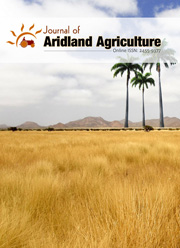Vertical distribution of soil nutrients under different land use systems in Bangladesh
Vertical distribution of soil nutrients
DOI:
https://doi.org/10.25081/jaa.2020.v6.6438Keywords:
Soil depth, land use system, available phosphorus, fractions of soil potassium, available sulphurAbstract
Soil depth can significantly influence the availability of nutrients in soil. An experiment was conducted with seven soil samples from seven land use types to observe the effect of soil depth on soil properties under various land use systems. Soil pH, electrical conductivity (EC), organic matter, available phosphorus (P), available sulphur (S) and different forms of potassium (K) such as water soluble, exchangeable and non-exchangeable were determined from the soil samples collected from four soil depths (viz. 0-10, 10-20, 20-30 and 30-40 cm). Soil pH varied from 6.30-7.39 irrespective of depths and land uses and it increased with increasing soil depth. Electrical conductivity of the soils ranged from 42-310 µS cm-1 and organic matter status of most of the soils was very low to medium in level. Both EC and organic matter content decreased with the increase of soil depth. Available P concentration showed no specific changing trend with soil depth whereas available S concentration under different land use systems decreased with increasing soil depth. The concentrations of water soluble, exchangeable and non-exchangeable K in soils varied from 12.30-39.60, 20.90-53.16 and 163.30-684.30 mg kg-1, respectively and showed no specific changing pattern with soil depth. Water soluble K content was higher in rice growing fertilizer and manure-treated soil but higher exchangeable and non-exchangeable K contents were observed in banana growing soil. In rice growing soils, nutrient concentration is mostly higher in nitrogen (N), P and K + farm yard manure (FYM) - treated plots compared to rice growing control plots.





 .
.